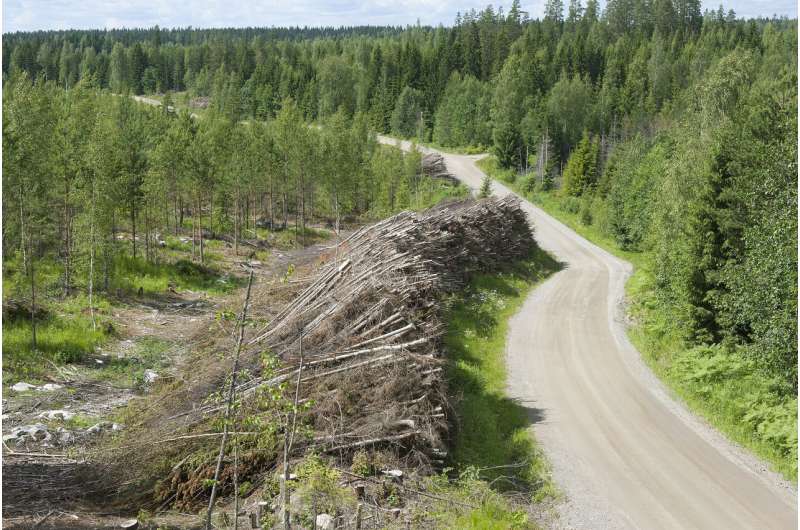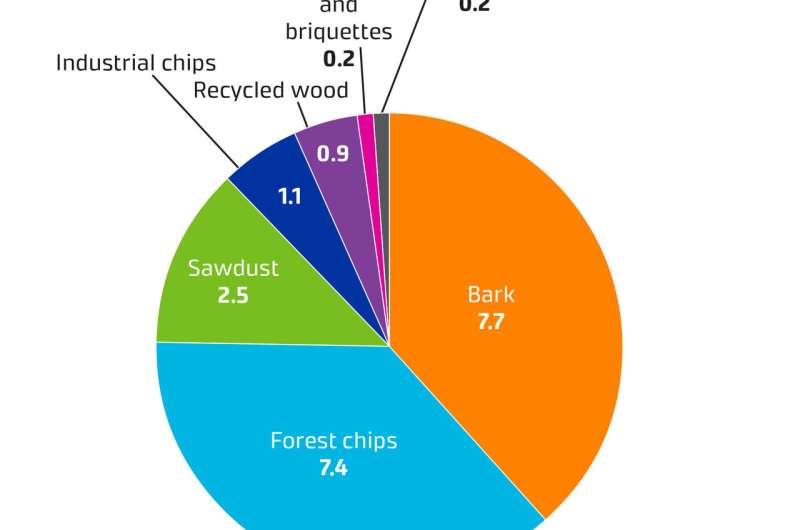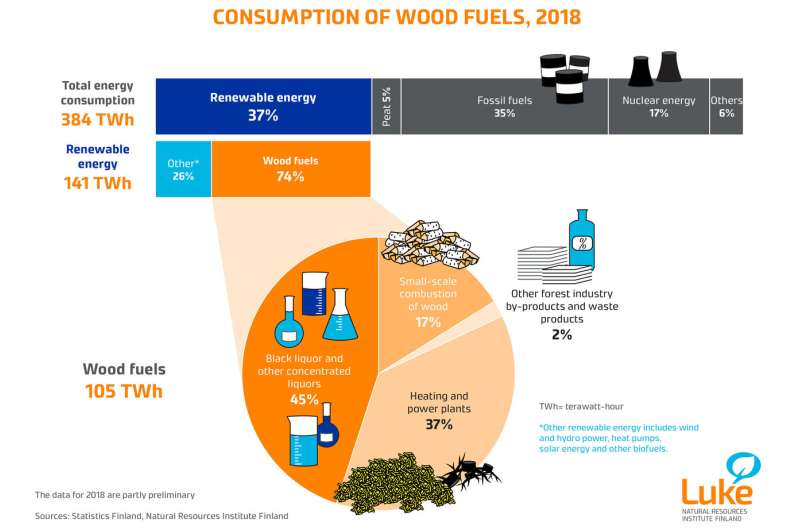Wood consumption in energy generation continues to increase

In 2018, the consumption of wood fuels reached yet another record as a result of the increased use of black liquor produced by the forest industries. Heating and power plants consumed the same amount of solid wood fuels as in the previous year. In addition, the small-scale combustion of wood remained unchanged.
According to the statistics of the Natural Resources Institute Finland (Luke), heating and power plants consumed a total of 20 million solid cubic meters (38 terawatt-hours) of solid wood fuels in 2018, being the same amount as in the previous year and also more than ever before.
Consumption of solid by-products decreased
"The consumption of forest industry by-products and wood residues decreased by 3 percent from the previous year to 11 million cubic meters," says Esa Ylitalo, Senior Statistician at Luke.
Bark comprised two thirds, or 7.7 million cubic meters, of all solid by-products consumed in energy generation, i.e. the same amount as in the previous year.
A total of 2.5 million cubic meters (–11 percent from previous year) of different types of sawdust and 1.1 million cubic meters (–10 percent) of industrial chips were burned.
The consumption of wood pellets and briquettes decreased from the previous year to 0.2 million cubic meters, while that of recycled wood increased to 0.9 million cubic meters.
Consumption of forest chips turned to an increase

The consumption of forest chips increased by 3 percent from 2017 to 7.4 million cubic meters.
"The use of forest chips in combined heat and power production increased by 4 percent to 4.7 million cubic meters after a four-year decrease. In heat production, their use increased by 1 percent to 2.7 million cubic meters," Ylitalo says.
Together with forest chips burned in small-scale housing (0.6 million cubic meters), the total consumption of forest chips reached 8.0 million solid cubic meters. The current record of 8.7 million cubic meters of forest chips was reached in 2013.
Use of logging residues increasing
A total of 3.9 million cubic meters of small-sized trees were used as raw material for forest chips, being a little less than in 2017. Instead, the use of logging residues increased by one fifth to 2.7 million cubic meters. The consumption of forest chips manufactured from stumps was 0.4 million cubic meters, being over one third lower than in the previous year. However, the use of large-sized timber increased by one sixth to 0.4 million cubic meters.
The consumption of solid wood fuels at heating and power plants was the highest in the Central Finland region. Forest industry by-products and wood residues were burned the most in the South Karelia region, while forest chips were burned the most in the Uusimaa region.
Wood the most significant energy source

Last year, wood fuels represented the most important energy source in Finland, covering 27 percent of total energy consumption. According to preliminary data from Statistics Finland, the consumption of wood fuels totaled 105 terawatt-hours in 2018. This is a new record and 4 percent higher than in the previous year. This increase resulted from the increased use of black liquor produced by forest industries, while other main wood fuel classes were at the previous year's level.
Provided by Natural Resources Institute Finland




















